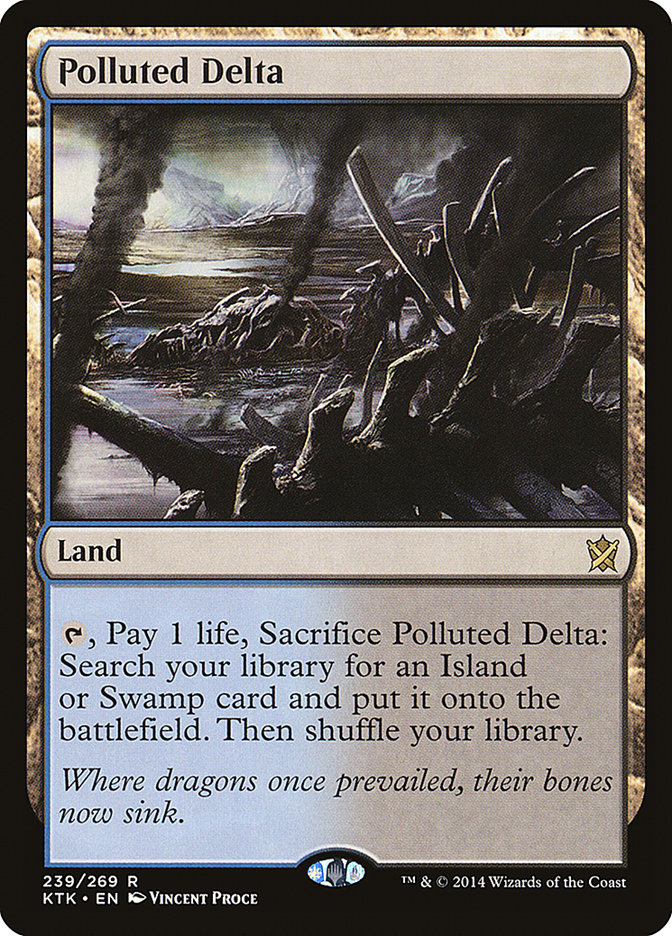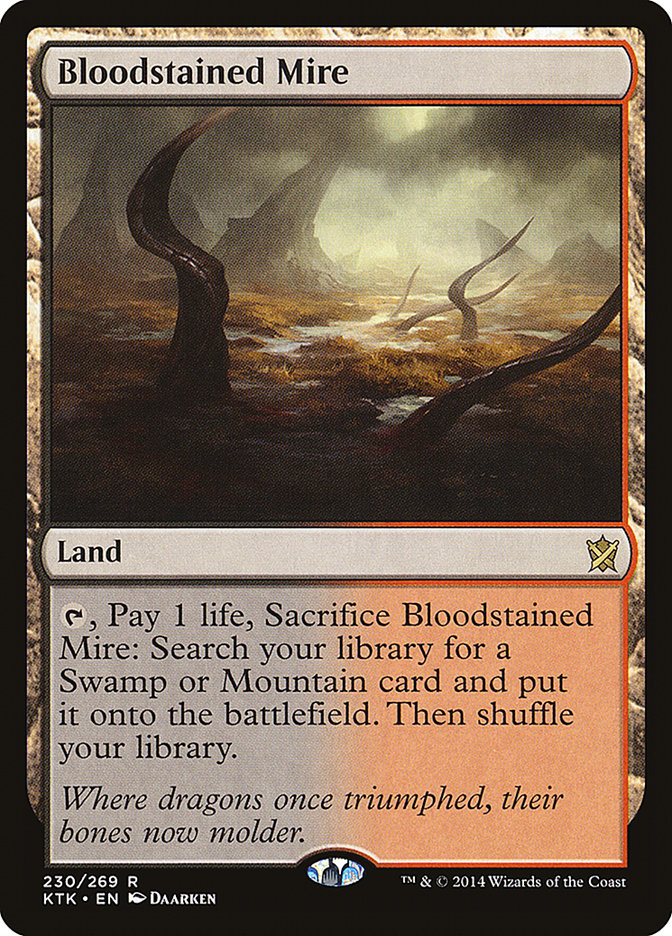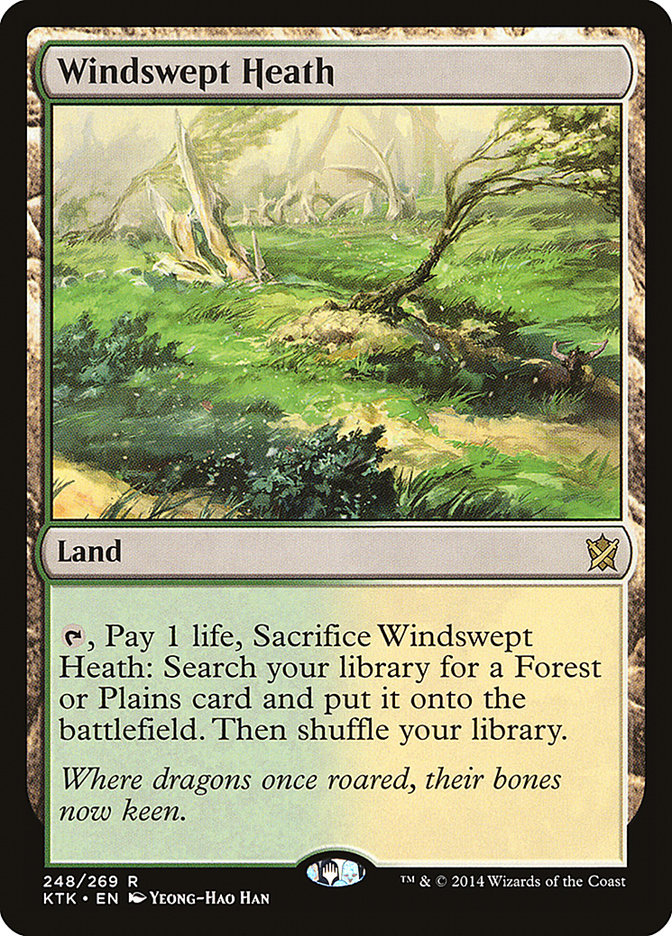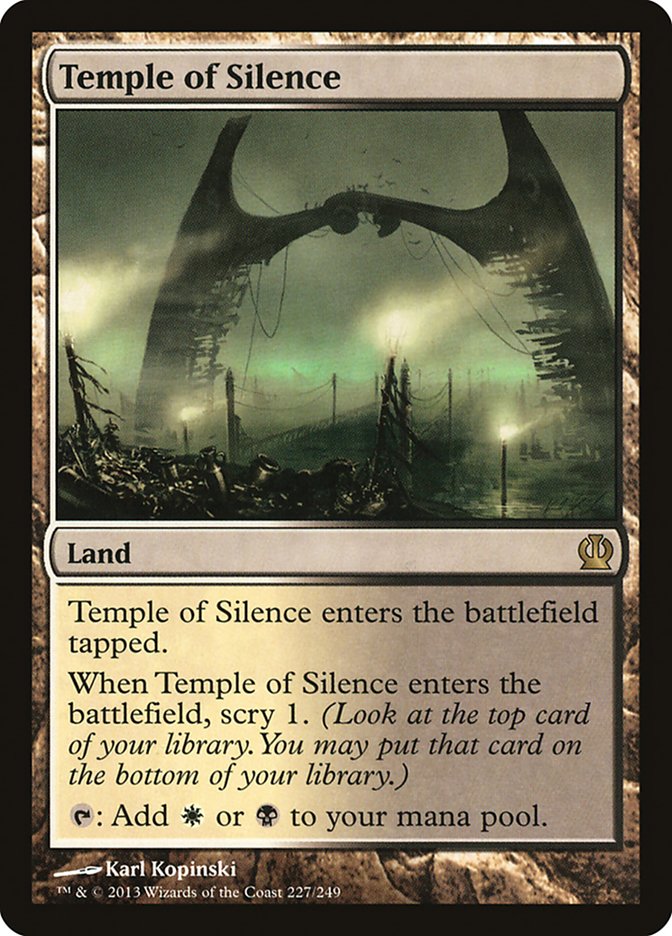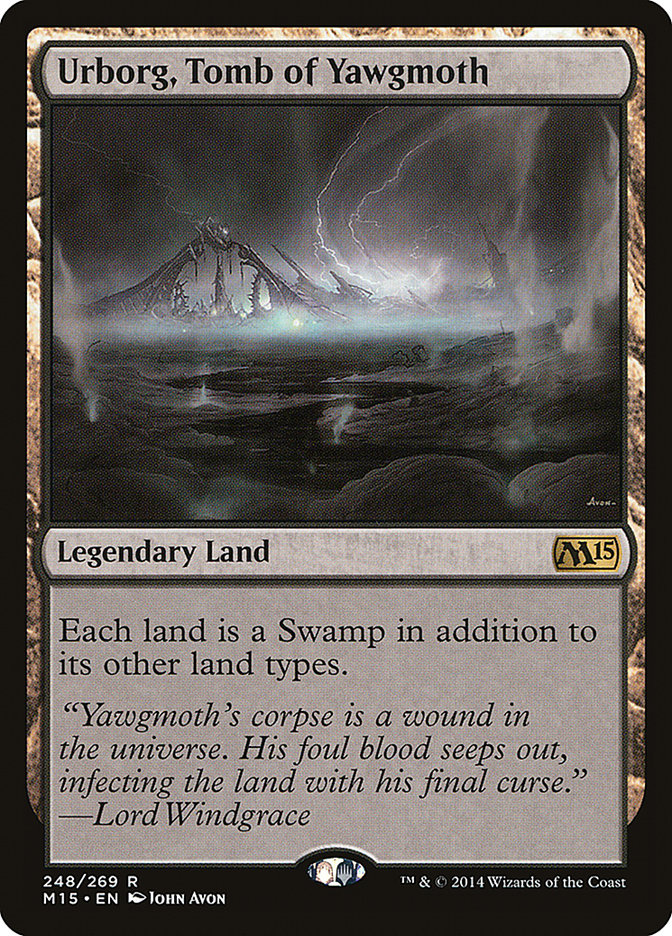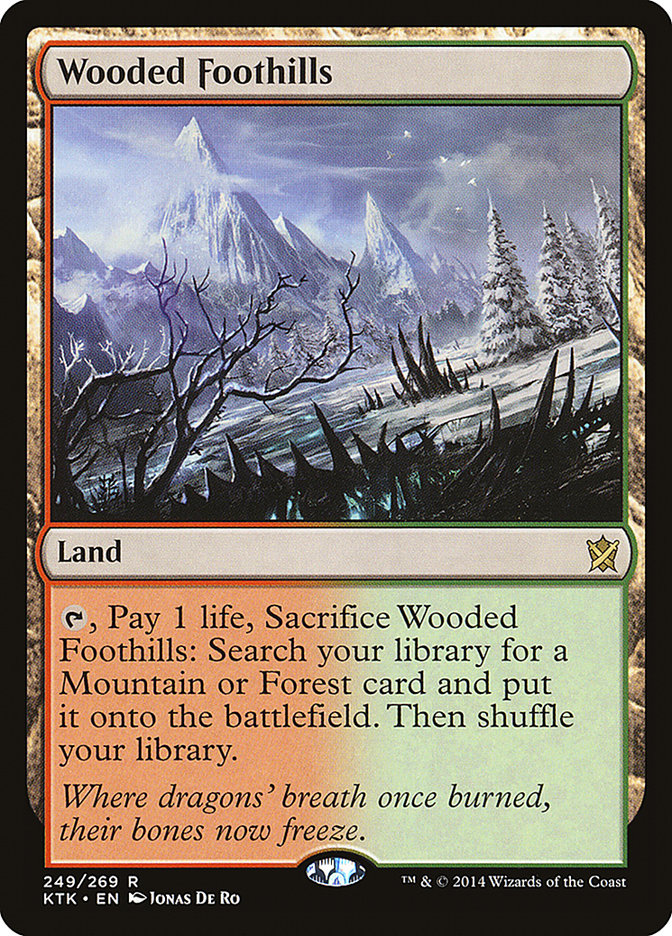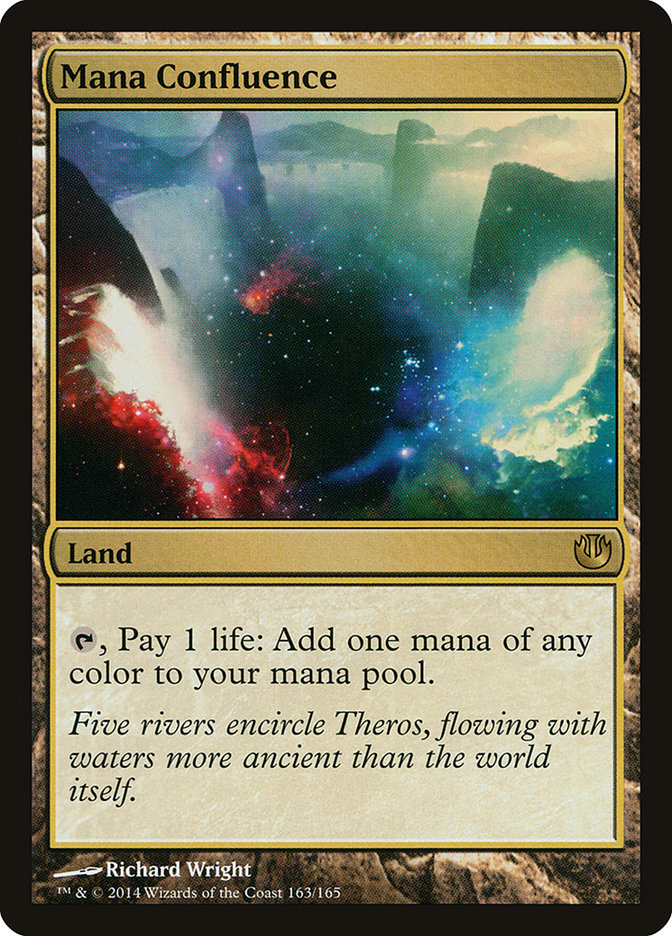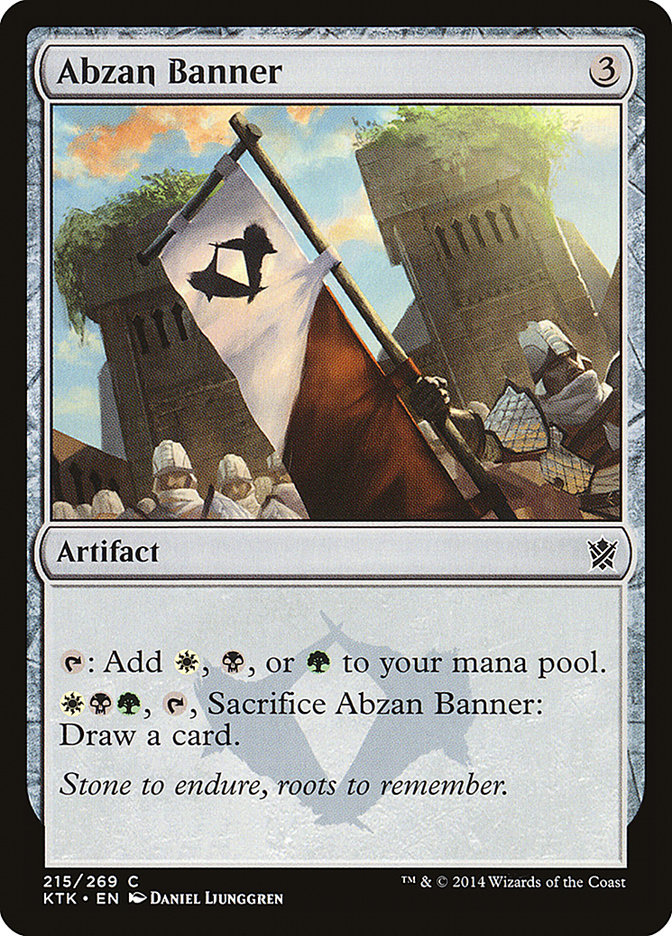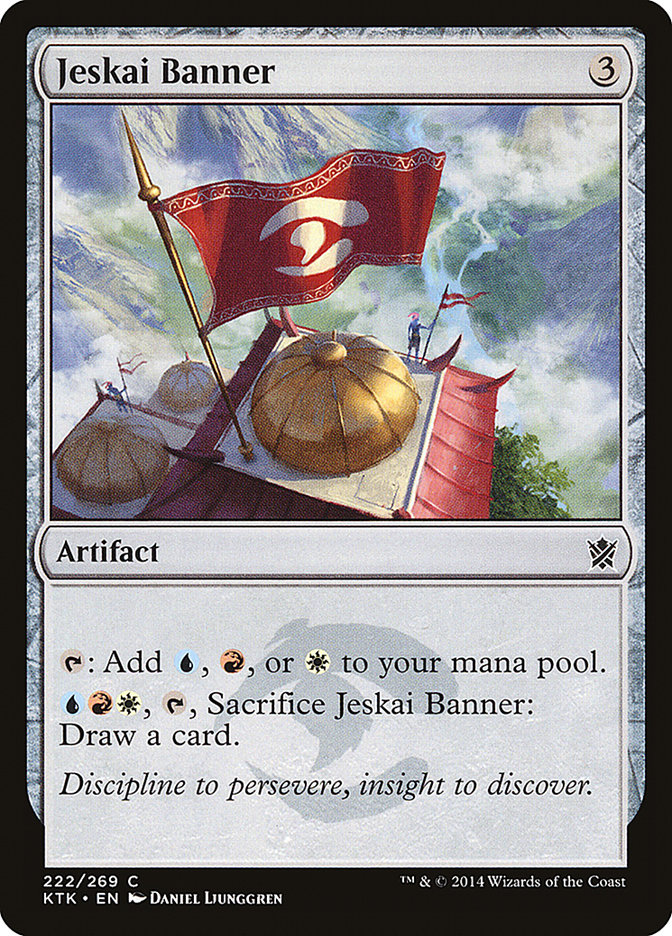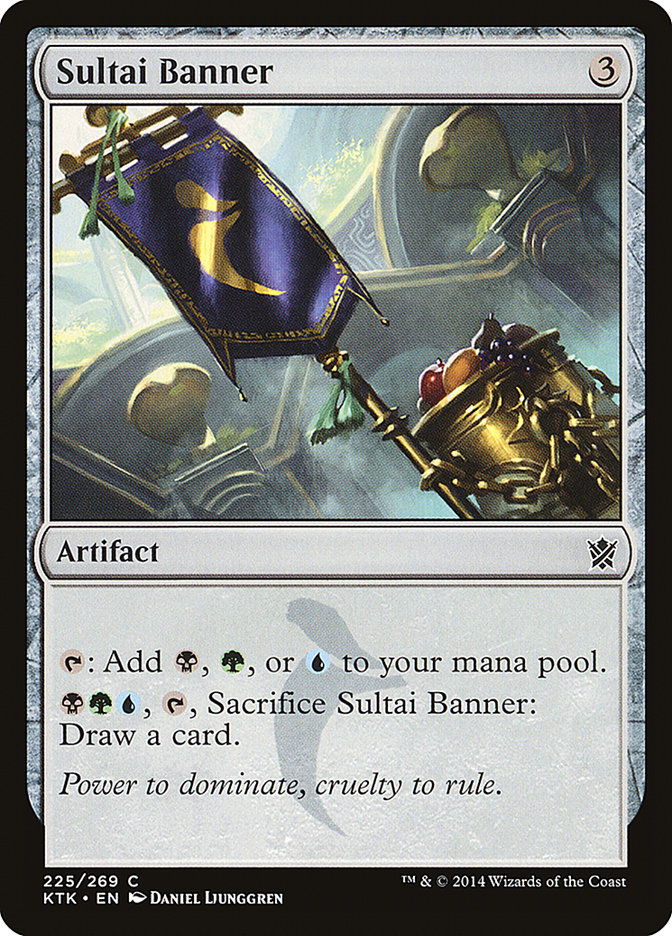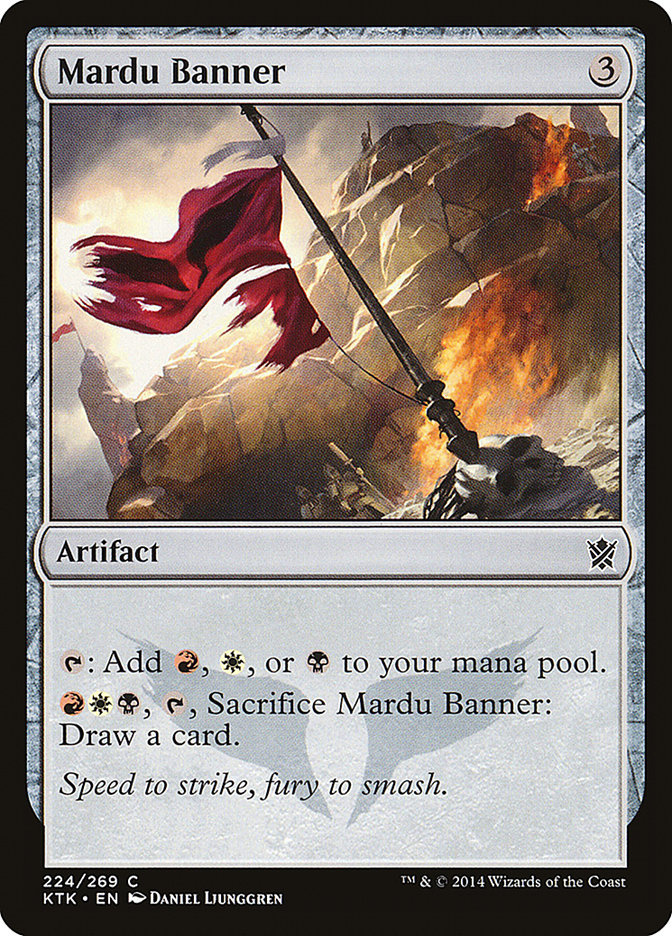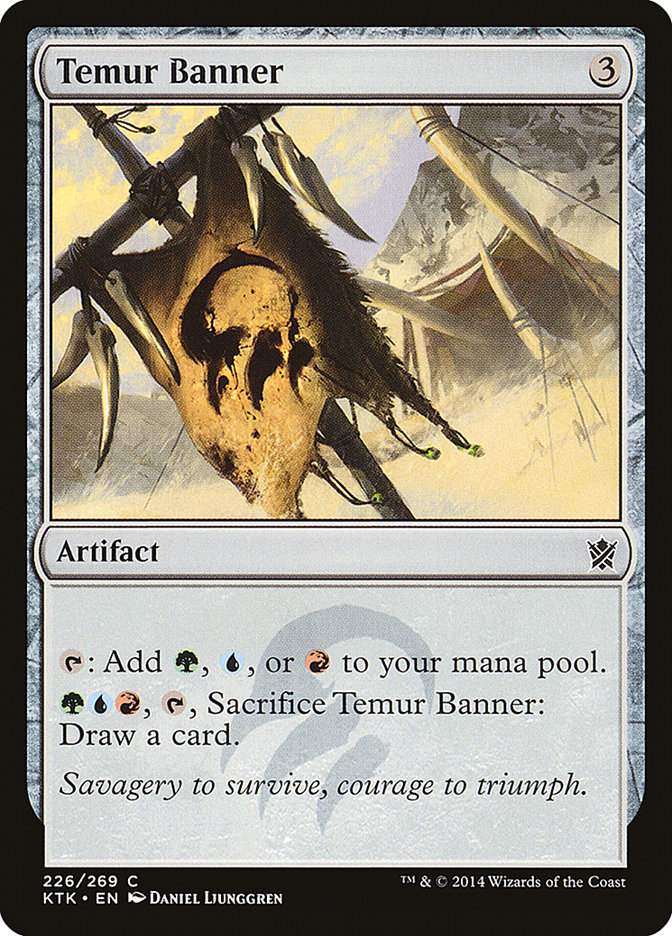Alright! The whole set’s spoiled for us now, and I’m loving exploring the heart of the wedges we’ve all wanted for so long. Shortly after Shards of Alara
came up, people were asking the inevitable question of the wedge block, and we’ve got it.
At least amongst the communities I follow, Khans of Tarkir got a bit of a bad wrap, but it was served to a crowd accustomed to a different taste. While
sets in the past have sugary, eye-catching mechanics and format-defining cards, Khans of Tarkir has proven itself to be a bit more of a pot roast; it takes
longer to cook, no one knows what to think of it, but eventually, we all take a bite and we forget we ever doubted it. It took a while for us to see the
different aspects of each clan and their flagship mechanics, and I still think that next week’s dual Open Series weekend is still a bit up in the air. Will
some aggro, a control shell, or a midrange-y good-stuff stack clumsily take down a drastically different Standard metagame?
Before tossing some cards in the brewing pot though, I think it’s important that we take a moment to discuss the most utilitarian–but most
impactful–cards in Magic: lands.
Players all around the world predicted the return of fetchlands, and they were right; the cards that gained popularity in Onslaught Block over a decade ago
have returned. For the first time since the new format system was introduced, every format has fetchlands. But the environment that fetchlands return to is
drastically different than the formats of the past and the Eternal formats of the present. In Zendikar days, fetching had the added benefit of triggering
landfall, a not-too-irrelevant mechanic in the days of Steppe Lynx, Lotus Cobra, and Bloodghast. In Modern, you can hit shocklands, allowing you to bridge
one fetchland into three or four colors if needed. In Legacy and Vintage, fetchlands get honest dual lands without the painful side effect, providing
perfect, sustainable mana.
Fetchlands in 2014 Standard don’t have any of that; they’re glorified Evolving Wilds, and that’s okay.
I believe that the development team made a conscious decision to increase the fixing ability of Standard while reducing its speed. If history is any
indicator, speed is better than fixing ability; consider the value of cards that fix for maybe two colors but come into play untapped, or maybe you
remember a game where a Temple was much worse than an untapped Plains or Mountain. Wizards has chosen to increase the power of actual mana fixing ability
at the expense of speed.
This is great news for new Magic players and/or Magic players who are more budget conscious. Competitive Magic formats have always been defined by
the quality of their lands, but that barrier has been significantly lowered for new entrants into casual and semi-competitive spheres.
Consider the land base that Khans of Tarkir brings us as Return to Ravnica Block walks out the door. Shocklands were expensive no matter how you looked at
them, and they were just the best lands you could have by a mile; a little sting when you play them and boom, free two-color mana forever, and you
could even bypass the sting if you wanted. In short, WOTC has effectively created three price and rarity “tiers” for our land base over the next year, or
at least the next four months.
Tier 3 – Common Khans Duals, Clands, and Evolving Wilds
Tier 3 contains three main sets of cards. The newest “guildgates,” functional reprints and stretches of the uncommon “refuge” lands from Zendikar, e.g.
Kazandu Refuge and Sejiri Refuge, comprise the majority of this tier. Right now, you can pick up each of these lands for a quarter, meaning that an
investment in a playset of all of them will set you back a cool ten-spot. Honest fixing across every color finally comes at a great price; even Ravnica’s
guildgates ran at twice this rate and are strictly worse than these unless you had Gate synergy, so getting in on the low end is even easier. The large
print run of Khans of Tarkir means these will be easy to pick up if you’d rather trade for them too.
The second set of cards in this tier are the new wedge lands. I like to call them “clands” for clan lands, so here’s hoping that sticks. The new “clands”
are priced at the same point as the old Shard lands when they came out five years ago, so around a dollar each. Because there’s only five playsets to get
instead of ten, this is still just twenty dollars to get you your wedge lands delivered.
The final set of cards are common and uncommon utility lands like Evolving Wilds, Unknown Shores, Darksteel Citadel, and Radiant Fountain, particularly
Evolving Wilds. This functional reprint of Terramorphic Expanse, with which it was briefly co-legal at one time if I recall, is not strictly outclassed by
the much more expensive fetchlands, as this lets you get three colors or more while fetchlands only allow two-color fixing these days. The other utility
lands may see some play as the format goes on, but with Evolving Wilds hovering at a dollar a playset over multiple printings, none of them will set you
back too much.
Total Tier 3 Playset cost: $37 ($10 + $20 + $1 + $4 + $1 + $1)
For less than a tank of gas, you can get into a respectable set of lands. Moreover, it’s fun to get land playsets. The flexibility of being able to just
build the fun part of the deck (i.e. the creatures and spells is fun for old and new players alike. I remember that I showed off my set of Seaside
Citadels in my college days, for heaven’s sake.) Don’t underestimate the ability to collect on the cheap.
Tier 2 –Temples, Pain Lands, and Legendary Lands
This is the level of fixing with which the majority of us are familiar. In most cases, the ability to send a card to the bottom of your deck is going to be
much more valuable than starting the game at 21 life, so the Temples of Theros Block are solid upgrades over the common lands of Khans of Tarkir, though
bear in mind that the Temples will rotate in a year and the new common cycle won’t.
Painlands, another land type harkening back to the days before the modern border, provide great speed and fixing, though at a fairly steep price of one zap
per tap. Although you can use it for colorless mana later on, these lands can help your opponent win in some games.
The auxiliary legendary lands, like Urborg, Tomb of Yawgmoth and Nykthos, Shrine to Nyx, fall in this category for their general utility and approximate
cost. Nykthos, Shrine to Nyx loses a lot of its capital with the rotation of critical hybrid creatures like Burning-Tree Emissary, Nightveil Specter, and
Boros Reckoner, and its future over the next year is a bit questionable.
Total Tier 2 Playset Cost: ($16*5 + $24 + $24 + $32 + $28 + $48 + $20*5 + $24 + $24) = $384
The Theros set Temples run at $16 for a set, while the ones in subsequent sets get more expensive. Painlands average around $5/each, depending on which
edition you get. Urborg and Nykthos run around $6/each. This is a significant expense if you want to have just the middle level of land base for any deck
in Standard.
Tier 1 – Fetchlands and Mana Confluence
While a smaller overall group, these lands are by far the most expensive in Standard. Fetchlands do offer perfect choice in a two color deck, and Mana
Confluence offers immense flexibility at the cost of life. Their quality and consistency isn’t to be underestimated, but neither is their price tag.
Total Tier 1 Playset Cost: ($80 + $80 + $80 + $100 + $120 + $60) = $520
The new printings of fetchlands are much cheaper than their Onslaught counterparts, but they’re still a pretty penny.
Total Standard Land Cost = $831
If you wanted to invest in a land set for Standard, that’s what it’d run you. That $37 isn’t looking too bad, is it?
The truth is that the higher cost lands do improve your consistency and, over the long run, they will help you play a cleaner, tighter list to
more success just by doing what they do. If you’re a tournament player that’s ready to take down local and national events, you must have the
pricey lands because of that small edge they give your deck before you ever draw your first seven. Over the course of ten rounds, you’ll be glad for those
scry triggers and untapped lands.
However, if you’re just starting out, there’s no shame at all in getting a Tier 3 set. The slightly greater variance by using the cheaper versions
is going to be fairly minimal over a short period, and if the rest of your deck is strong, you’ll still have a comparable experience than someone playing
with a higher-cost manabase. I’ve heard lots of new players lose their fire for the game because of the prohibitive costs of the land base. Planeswalkers
and powerful creatures are much more fun to trade for! They get these great cards, then they’re told to drop a couple hundred bucks on fairly unexciting
land upgrades. Now, the gap between tiers of mana has never been smaller, and I’m excited for what that means for the growth of the game.
So, there’s a Prerelease this weekend. Are you going?
They just never stop being fun for me, and they mark my favorite event of the Magic season. Fall sets are my favorite; they’re large, they’re new, and you
always play a different deck than you expect. The level of variance is high and can create for some exciting plays and stories. Although I normally go at
night, I’m planning to go to the 4:00 PM event on Saturday at my local shop, Through the Decades, like a normal human being. Even after dozens of events, I
can’t wait to attend another one!
I have to admit, I’ve been a big fan of the new “seeded” Prerelease style, where you select a guild, color, or clan in this case, to “lean” your sealed
pool in one direction or another. This particular iteration doesn’t promise you one Prerelease rare or another, so we’re forced to choose our clan based on
the overall plan of each and its possible success, so let’s look at each one.
Abzan
Abzan seems to be the closest to a Selesnya-style, crowd-the-board playstyle. The presence of +1/+1 counters, tokens, and a dash of black removal and power
gives us an interesting clan profile. Much like Selesnya was in the Return to Ravnica release, this clan has what it takes to go the distance. I feel like
Abzan decks will take up more table space during play than any other clan, which means combat might take the longest.
+1/+1 counters are historically strong in Sealed, as they push an on-board dud into a must-answer threat. Moreover, outlast seems like a great mana sink
late in the game. What I can’t decide is how aggressive Abzan is; if you’re stuck outlasting your 3/2 into a 4/3 on turn 7 without advancing your board,
there could be a problem. Overall, Abzan looks like it can go the one big bruiser route and the swarm route equally well. Deciding what strategy is better
will be critical to capitalizing on the Abzan Houses.
Jeskai
Jeskai, honestly, was one I’d written off more than any other, even for Constructed play, but I’ve recently come around. However, I am concerned that
Jeskai and its hallmark mechanic, “prowess,” is a bit narrow and conditional to be effective.
Because of that, Jeskai decks will rely on the quality of their cards and the sequencing with which they’re played more than the innate synergy between
them. Jeskai might be a bit more rare-reliant than others, as they lack beefy ground pounders. What they lose in bulk they make up for in lift; cards like
Mantis Rider, Thousand Winds, and Jeskai Windscout might likely be the critical cards to play given your plan. There’s a lot of question marks for Jeskai
as a clan, though I believe some of their cards may work well in other strategies, as they’re less reliant on a narrow mechanic, like +1/+1 counters. Every
deck has noncreature spells, after all.
Sultai
Like Jeskai, Sultai is a bit hard to read. We’ve realized that too much delve is a bad thing, so the key mechanic of the clan may be difficult to fully
realize. However, the spell quality in Sultai is excellent; cards like Murderous Cut and Treasure Cruise are top notch. In Sealed, you might even hard cast
them for almost full cost and be completely content to do so.
Sultai’s general gameplan worries me the most–self-mill. Sealed Prerelease games go longer than almost any other, and if you’re drawing cards and milling
cards long enough, you’ll eventually run out. While delve starts to get better over time, there’s no chance to recycle your deck if you’re getting thin.
While the size of your deck, like your life total, rarely matters unless it’s going to kill you in a turn, the constant concern is enough to steer me clear
of a heavy Sultai plan.
Mardu
Mardu might win the award for “best for Draft, trickiest for Sealed.” To leverage the raid mechanic, you need to be in the red zone a lot, and the more
you’re attacking, the more likely you are to walk into a defensive trap. Raid is very good as it happens in addition (timing and extra cost are often not
as relevant). As long as you’re staying aggressive, you’ve got nothing to worry about.
Mardu has some truly game ending cards in its wedge, like Butcher of the Horde and Ankle Shanker, so there’s lots of potential for Mardu. To help with
Mardu, I’d prioritize evasive creatures that can constantly keep raid online. Cards with first strike, flying, or deathtouch all gain additional subjective
value in a Mardu list. I know there’ll be one person that opens the nut Mardu deck, and I can’t wait to see it.
Temur
Temur is my kind of clan. Big beats, little tricks and intricacies, and game ending creature and noncreature plays. Temur is a kind of recklessness that
keeps one eye on its target and another on its opponent’s response, and that kind of mix is great. Green and red are particularly strong in Draft, and
outfitting a powerful team should be your top priority.
I’m not sure how most decks beat an on-time Savage Knuckleblade, especially after you untap so you can pump and/or protect it at will. I’d be concerned
about relying too much on ferocious; it can be broken up fairly easily with removal, and some spells are nearly unplayable in Sealed without it (see
Adamant Negation). In general, I think Temur lacks consistency, and I believe the variance from one game to the next might be very significant. Even if
that’s true, I still feel like you’d be having a great time.
I can’t decide what I’ll play on Prerelease day, and frankly, I always seem to change my mind. What I will say is it will be between Temur, Abzan, and
Mardu in that order. Abzan looks like it could crush you by overwhelming you, Temur’s got the tempo and high-powered bruisers I like, and Mardu is a nice
mix of the two, albeit a riskier concoction.
I’ll be back next week with two exciting brews based around a critical new spell, but until then, who will you be playing this weekend, and how did you
arrive at that decision? As we sit poised for a new Standard, which clan do you think will dominate the steppes, mountains, and deserts of Tarkir?


